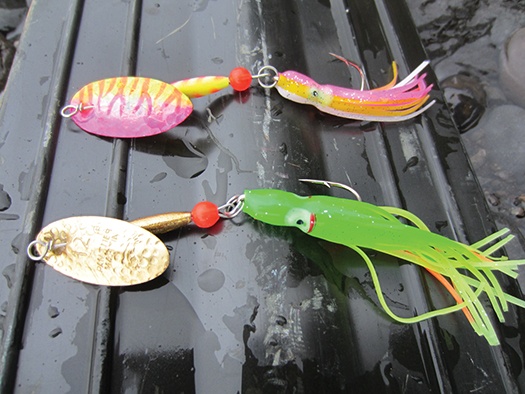Садржај
The palia char belongs to the salmon-like order, the char genus. Predatory fish of medium and large sizes can reach a length of 75 cm and weigh 6-7 kg (sometimes – 9,5 kg). Lives up to 20 years. Pronounced differences from other representatives of the genus are bright color, large head, convex forehead.
Ways to catch char-char
Pali fishing is extremely exciting. This powerful representative of the salmon family is famous for its active resistance. Pali fishing is difficult. Even the Finnish tribes that once settled in the habitats of the palia char were sure that it was pointless to catch this fish. There were even sayings hinting that catching charcoal was comparable to carrying water in a sieve. Nevertheless, one should only study the habits of the palia, and its capture becomes quite real. In open water, char is mainly caught by spinning, in winter – by sheer lure and mormyshka.
Catching char-char on a spinning rod
If there is a palia in a pond, it is very possible to catch it with a spinning rod. But in terms of fishing technique, there can be problems, since there are two forms of palia. One is red, most often found at shallow depths. The second is gray, found at great depths (up to 100 m or more). The best time to fish for palia is in August. In some reservoirs – in May-June. Usually, deeper places are chosen to catch char. When the fish is kept at depths inaccessible to ordinary spinning gear, the trolling fishing method is used. To achieve the result, the rod is placed fixed on the stern, the fishing line is lowered to its full length, which in the depths of the inaccessible is 2 times the depth of the lake. This method gives the desired play of the baubles, and the moving watercraft allows you to provide the desired depth for effective fishing.
Catching char-char on mormyshka
When fishing for palia in small water bodies, of which there are a lot in the North, mormyshkas are used, coated with either a special paint or a paste containing a special light composition. This makes it possible to attract fish even at solid depths. In the absence of such baits at hand, a luminous bead is taken and fixed between two pellet sinkers. As bait, you can use various insect larvae, worms, and amphipods. In autumn, the mormyshka is caught directly from the shore, using a long fishing rod with a float tackle for this purpose. She can fish at a depth of 2-4 m.
Catching char-char with sheer lure
It is convenient and effective to catch palia on Ladoga or Onega lakes with sheer lure. Any spinners that weigh from 50 to 100 grams with any hook sizes are suitable. Many anglers make their own lures from lead-tin alloy. The bait is of great importance, since the fish will covet on a bare hook only with a large accumulation. Any fry will be suitable for catching, however, to catch a pit char, you need to find a burbot fry. Why burbot? The fact is that the palia is a cautious fish and eats only what is next to it. And burbot with palia is always in the neighborhood.
Palia is a fish that loves cleanliness. She cannot live in polluted water. In addition, it is negatively affected by migrant fish from other water bodies, which are not characteristic of the one in which the palia lives. Palia meat is very tasty. So far, char fishing is somewhat limited, but in the near future its numbers should increase, and it will increasingly delight anglers.
Fishing grounds for char-char and habitat
Palia char is a northern fish that lives in the lakes of the Scandinavian Peninsula, as well as in the north of European Russia. In the North-West, palia lives in lakes: Ladoga, Onega, Pagliozero, Topozero, Pyaozero, Segozero, as well as in large lakes of the Kola Peninsula – Lovozero, Umbozero, Imandra. Thus, the palia leads a mainly lacustrine way of life. Rarely found in rivers, as an exception.
Мријест
Spawning of each individual is not annual. The palia breeds from the end of summer to October. Females spawn on the shallows near the shore on rocky ground. Sand and pebble is used less frequently. Absolute fecundity ranges from one and a half to eight thousand eggs. The average figure is almost 3 thousand eggs. The caviar is yellow, its diameter is from 3 to 3,5 mm. There are two lacustrine forms of char: shallow-water pudding and deep-water ridge. It feeds on small fish: vendace, smelt, stickleback, as well as mollusks, amphipods, air and aquatic insects, larvae of mayflies, caddisflies, stoneflies. The fish grows slowly, annually the body length grows by 1-2 cm.










